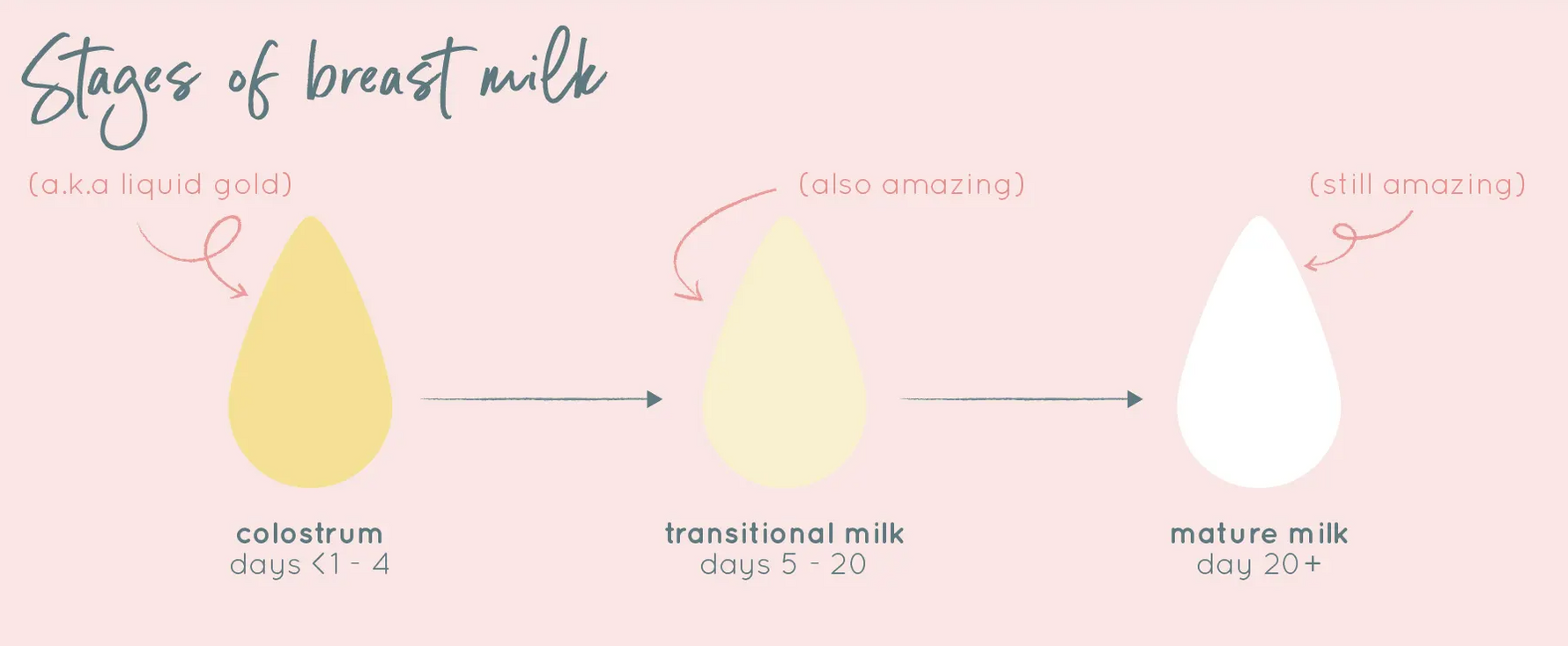Pregnancy & Breastfeeding Tips for New Moms: Preconception, Pumping & Parenting Support
To use a breast pump safely, you need to keep its parts in good condition. However, over time, parts such as valves, diaphragms, duckbills, backflow protectors, flanges, and pipes may wear or become damaged. Knowing when to replace these parts can ensure that the breast pump can work efficiently and remain hygienic. Regularly updating breast pump parts can also maintain suction strength and cleanliness, ensuring that mothers can enjoy a smooth and comfortable breastfeeding experience.
💖 Pump Smarter, Save Bigger!
Make every pumping session easier with MomMed breast pumps — up to 30% off.
Code: PUMPJOY Shop Now →
How Do I Know if I Need New Pump Parts?
To maintain the efficiency and life of the breast pump system, it needs to be checked regularly. If any problems are found, it is recommended that the parts be replaced immediately. Here is a general guide to replacing breast pumps, which I hope will help you determine when to replace pump parts.
1. Decreased Performance
If your pump is experiencing reduced flow, pressure drops, or increased run time, this could be a sign of wear or damage to internal parts. These problems can be identified by measuring flow and pressure and comparing current readings to the pump's specifications.
2. Abnormal Noises
Grinding, squealing, or banging noises during operation. This could be bearing wear, misaligned parts, or cavitation issues. Listening carefully to the pump's operation can help you detect mechanical problems.
3. Increased Vibrations
Excessive shaking or movement of the pump could be caused by imbalance or wear. Vibration analysis tools can be used to measure vibration levels; higher-than-normal readings indicate that parts need to be inspected and replaced.
4. Leakages
A noticeable fluid leak around the pump is usually caused by wear or damage to seals, gaskets, or connections.
5. Overheating
If the pump's motor feels hot or stops working, it could be due to motor failure, battery issues, or internal water damage. Check the connection points and charging port for any dirt or debris to help identify the problem.
6. High Energy Consumption
If power and usage are increasing, but output is not, this is usually a sign of wear and tear on parts, leading to inefficiency. Monitoring energy consumption can help you identify and resolve pump wear issues in a timely manner.
7. Frequent Repairs
If your pump is frequently in need of maintenance and repairs, this may indicate that some parts have reached the end of their useful life. By assessing the frequency and nature of repairs, you can determine if parts need to be replaced to improve system reliability.
8. Visible Wear
Corrosion, erosion, or physical damage to some pump parts are usually obvious signs of aging. Regular inspections of internal and external components can help identify and replace damaged parts in a timely manner.
Timely maintenance and replacement of pump parts can improve the performance and life of the breast pump. In our daily lives, by monitoring these signs and performing routine inspections, we can ensure that the breast pump system can operate efficiently and reliably.
How Often to Replace Pump Parts?
When maintaining a breast pump, especially one used for expressing breast milk, there are six main parts to consider: diaphragms, duckbill valve, linker, flange, tubing, and milk collector. Below is a guide to the recommended replacement times for these parts to ensure the optimal performance and hygiene of the breast pump.
1. Diaphragms
It is generally recommended to replace valves and membranes every 1-3 months. Because they affect the suction required for milk extraction, frequent use can also cause them to wear or break, resulting in reduced suction and efficiency.
If you find that your breast pump is less efficient than it once was and you are taking longer to pump, it may be time to check and replace the valve and diaphragm.
2. Duckbill Valve
Duckbill valves should be replaced every 1-3 months. They control the flow of milk into the collection bottle and prevent milk from flowing back into the breast pump. However, as they are used for a long time, they will lose elasticity and shape, resulting in leakage and reduced suction.
If you suddenly see milk backing up into the line or a loss of suction, it’s likely time to replace the duckbill valve.
3. Linker
Linkers should be replaced every 3-6 months. The linker connects the breast pump's diaphragm to the milk collector, allowing breast milk to flow one way into the milk collector and helping to keep the system clean and functional. Over time, the linker can wear out and become less effective.
If you notice milk near the pump's motor, it could be a sign that the linker needs to be replaced.
4. Flanges
Breast pump flanges, also known as breast shields, are generally replaced every 6 months to 1 year. They are in direct contact with the breast and need to fit well to form a proper seal and ensure comfort during pumping. Over time, with frequent use and cleaning, flanges may crack, bend, or lose their effectiveness.
If the flange you are using does not feel comfortable or you find cracks, you need to replace it with a new one to ensure a good fit and suction.
5. Tubing
It is generally recommended to replace the tubing of a breast pump every 3-6 months. This is because the tubing is responsible for transferring the vacuum from the breast pump to the breast shield. Through the use of the rack, the tubing may become moldy, condensed, or damaged, which will affect suction and hygiene.
If you notice wet condensation or mold in the pipes, replace them immediately to maintain hygiene and pump performance.
6. Milk Collector
Milk collectors should generally be replaced every 3-6 months. Milk collectors are used to gather the expressed milk, and over time, they may show signs of wear, cracking, or discoloration, affecting the safety and hygiene of the milk.
If you notice any damage or discoloration in the milk collector, replace it promptly to ensure the quality and hygiene of the milk.
Regularly replacing key breast pump parts can maintain their performance and hygiene. You can also replace them by following the recommended replacement schedule and maintenance tips, so you can keep your breast pump in optimal condition and a comfortable and efficient use experience.
Tips for Maintaining Breast Pump Parts
Proper care of your breast pump and parts will ensure the efficiency, lifespan, safety, and health of your breast pump. Here are some practical tips to help you keep your breast pump in top condition.
Read the Manual: Each breast pump may have different maintenance requirements, so read the manufacturer's instructions carefully for important information about use and maintenance before you perform maintenance.
Daily Cleaning: After each use, disassemble and clean all parts that come into contact with breast milk, either by hand in warm, soapy water or in a dishwasher (if the parts are dishwasher-safe), then let them air dry in a clean environment.
Sterilization: Especially for newborns or premature babies, it is recommended to sterilize breast pump parts at least once a day using a steam sterilizer, boiling water, or a microwave sterilization bag.
Check for Wear and Tear: Regularly inspect breast pump parts for signs of wear, damage, or age, especially tubing, valves, and membranes. Replace any parts that appear damaged or worn promptly.
Store Properly: Store breast pump parts in a clean, dry place out of direct sunlight. Make sure parts are completely dry before storing them separately to avoid moisture retention and mold growth.
Handle Tubing with Care: If your breast pump has tubing, make sure it is dry and clean. If moisture is trapped in the tubing, wash it in warm, soapy water, rinse thoroughly, and hang it to dry.
Monitor Motor Performance: Watch for changes in motor sound and suction performance. If your breast pump becomes less efficient or makes unusual noises, it may need repair.
Use Recommended Accessories: Only use accessories and replacement parts recommended by the manufacturer. This not only ensures compatibility and safety but also helps maintain your breast pump's warranty.
Keep a Backup Manual Breast Pump: In the event of a mechanical failure or power issue, a backup manual breast pump is useful to ensure uninterrupted, continuous expression.
Contact Customer Support: If you experience a problem with your breast pump that is not covered in your user manual, feel free to contact the manufacturer's customer service for help or advice.
Conclusion
To keep your breast pump working effectively and hygienically, you need to replace its parts regularly. Replacing these parts ensures that your breast pump maintains optimal suction and cleanliness, providing you with a better experience and safety for your baby.
If you're looking to buy breast pump accessories, check out Mommed's comprehensive range of maternity essentials, including high-quality breast pumps and a wide range of accessories to make motherhood a worry-free experience. Whether you're looking for an efficient portable breast pump, wearable double breast pump, electric double breast pump, or need replacement parts like duckbill valves, flanges or shields, Mommed has everything you need to support you on your breastfeeding journey.
Related Reading: How to Use a Breast Pump?






















